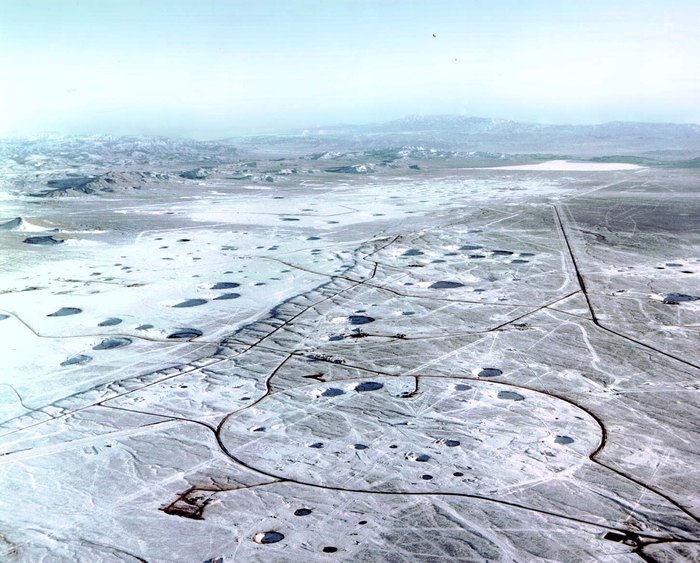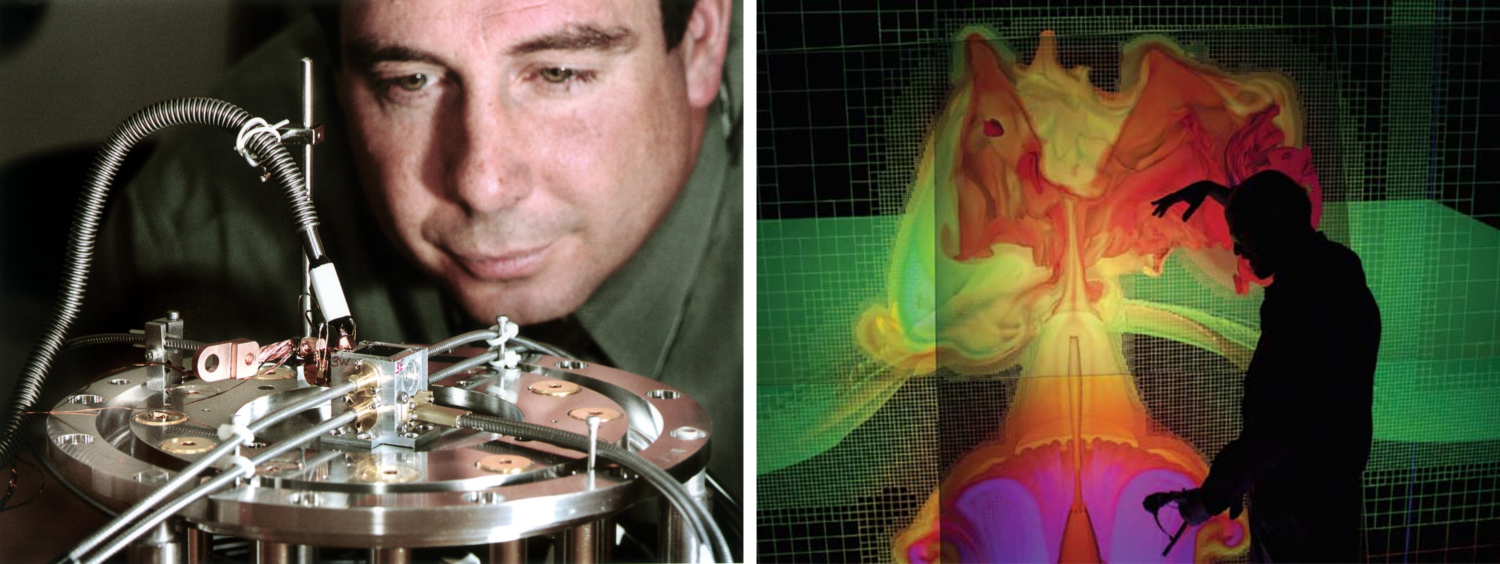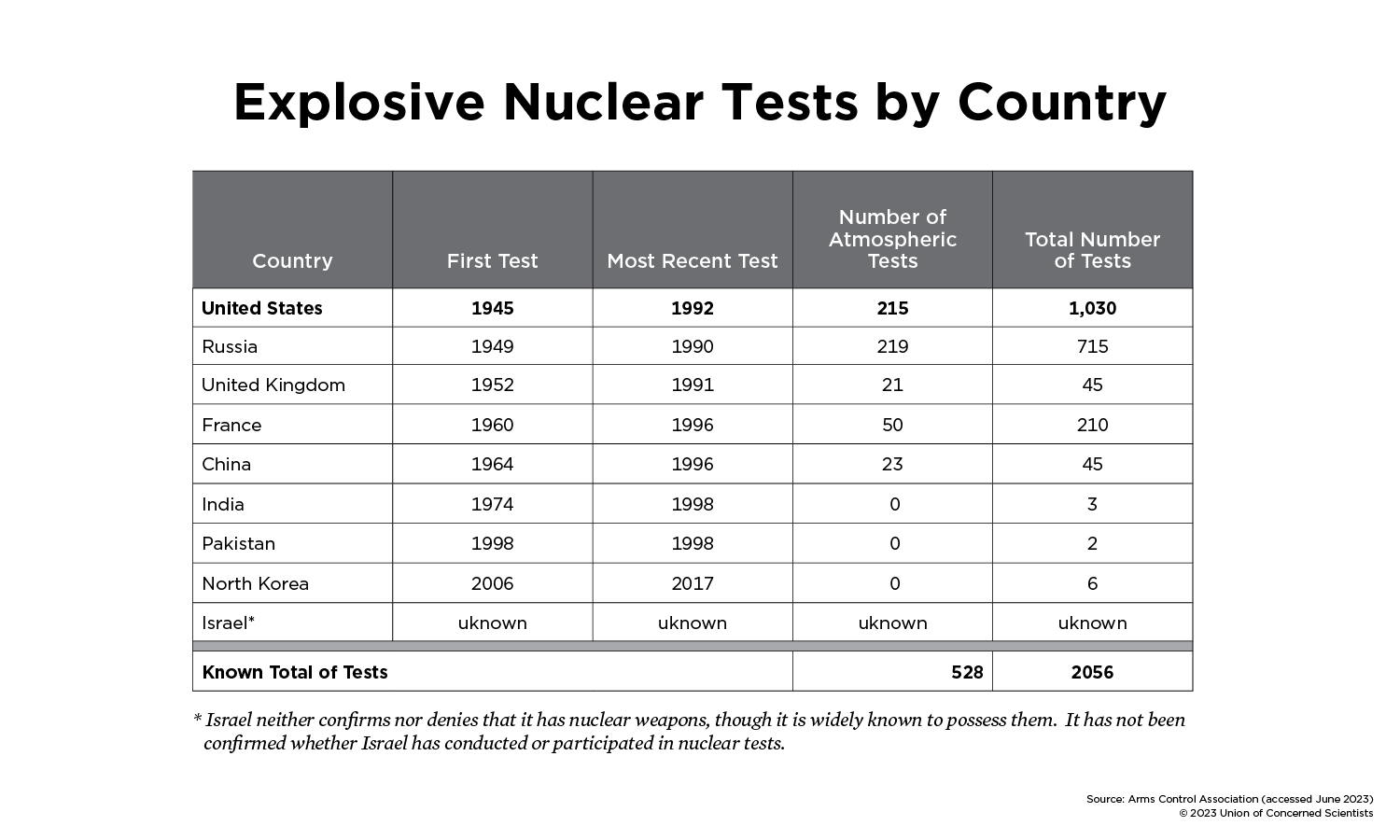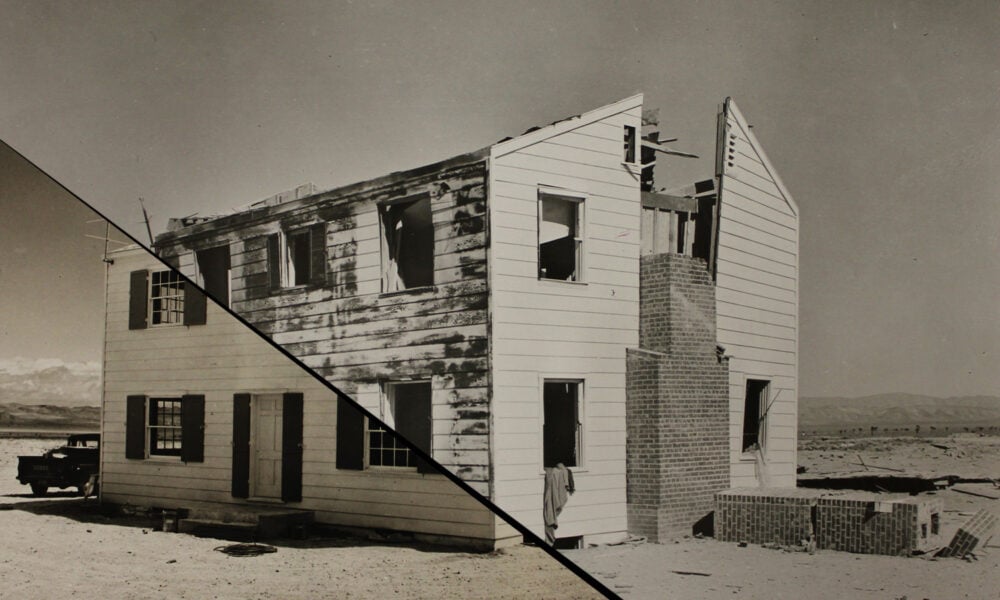By all accounts, the nuclear weapons landscape is shifting. Media attention around nuclear threats has been reinvigorated by the Russian invasion of Ukraine, North Korea’s frequent missile launches, and a perceived rise in geopolitical tension reminiscent of the Cold War. Add to that the Trump administration’s withdrawal from the Intermediate Range Nuclear Forces Treaty (INF), the so-called ‘Iran Deal’ (the Joint Comprehensive Plan of Action or JCPOA) and the present precarity of New START, which is the last remaining bilateral nuclear arms control agreement between the US and Russia, and one begins to feel an imminent paradigm shift that some believe is symptomatic of a new, multi-polar arms race. Along with this comes apprehension about the possible resumption of nuclear testing.
Development and modernization of nuclear capabilities are underway in some form in all of the nine nuclear-armed states. The US is currently in the process of replacing all three legs of its nuclear ‘triad’ at a cost of at least $600 billion by 2030. This includes new nuclear-capable submarines, bombers, and intercontinental ballistic missiles (ICBMs) equipped with the first new warhead designs to enter the stockpile since the 1980s. These new warheads will be equipped with newly manufactured plutonium pits (the explosive core of the weapon). Meanwhile, there is debate over China’s nuclear ambitions, fueled by the revelation of new missile silos, while Russia recently deployed its own new ICBM. Given these circumstances, speculation that nuclear tests may soon follow seems natural.
It is undeniably difficult for proponents of nuclear disarmament to find silver linings in the current environment; however the possible demise of nuclear testing is one area where there is reason for hope. Although nuclear tests played a key role in nuclear weapons development throughout the Cold War, one way in which the nuclear landscape has shifted is that the costs of explosive nuclear testing now outweigh the benefits for the United States and the majority of its nuclear peers.

A new scientific regime
During the Cold War, our ability to certify designs in the nuclear arsenal relied on explosive testing, in part because of a lack of complete scientific understanding of the materials and physics involved. From 1945 to 1992, the United States conducted 1030 nuclear tests, far more than any other country. All of the currently-deployed US nuclear weapon designs were validated with full-scale, explosive underground tests which only ceased following the fall of the Soviet Union and the successful negotiation of the Comprehensive Test Ban Treaty (CTBT) in the 1990’s. The CTBT has helped define the post-Cold War era nuclear détente, during which the US and Russia dramatically decreased the number of warheads in their stockpiles and ceased development of new designs.
The US is a signatory to the CTBT and has abided by its terms despite the US Senate’s failure to ratify it. Instead, we remain one of several key hold-out states blocking its entry into force. Many countries that have not yet ratified the treaty would likely do so quickly if the US were to lead. Despite not being formally beholden to the terms of the CTBT, the US changed its approach to studying and validating the surety of the stockpile upon the cessation of testing.
A science-based ‘Stockpile Stewardship Program’ (SSP) was adopted in the late 1990’s and effectively brought nuclear weapons physics out from underground and into the laboratory. Stockpile stewardship relies on a combination of experimental and computational tools to understand weapons performance and certify the safety, security, and reliability of weapons through non-nuclear materials science experiments and advanced computational modelling, down to the atomic scale. The goal of the program has been to maintain confidence in existing weapons designs, to determine how long they can last, and to identify any age-related issues that can be addressed through periodic maintenance or ‘life extension’.
While explosive underground tests serve to validate the performance and functionality of an assembled design, they are not very conducive to understanding the microscopic details and materials physics that ultimately govern weapons performance. Instead, the SSP has developed a suite of experimental facilities which are capable of subjecting materials to pressures and temperatures comparable to those experienced in a nuclear detonation. These experimental platforms allow material properties to be meticulously mapped in these ‘High Energy-Density’ (HED) regimes. The results are used to inform detailed models that run on some of the world’s most powerful supercomputers, allowing scientists to simulate processes across scales and with resolution that would be unattainable in an underground test. Today’s underground tests are limited to subcritical experiments on surrogate materials or scaled-down quantities of fissile material arranged in configurations that do not result in a chain reaction that would produce a nuclear yield.

Over the past 25 years, science-based stockpile stewardship has proven incredibly successful, even exceeding original expectations. Data provided by the program allows a much more thorough understanding of relevant physics and materials science than was possible when the weapons were first designed. Paradoxically, the results of the stockpile stewardship program have provided so much confidence that the national labs now feel emboldened to rely on it not only for maintenance of existing weapons, but also for modernization and advancement of new designs. The director of the National Nuclear Security Administration, Dr. Jill Hruby, frequently and emphatically echoes this confidence, stating that the US is not testing now “and our plan is to never do so again”.
Russia, China, the UK, and France have developed similar approaches to managing their respective stockpiles. Construction of advanced experimental facilities and demonstration of competence in relevant scientific fields has arguably become the modern means of demonstrating nuclear prowess in the way that billowing mushroom clouds were in the 1950’s.
Eyes, ears, and seismometers
Even if we no longer require explosive nuclear tests to sustain our nuclear stockpile, how do we ensure that other countries are not doing so to secretly advance their own arsenals?
Today, a global network of sensors run by the Comprehensive Test Ban Treaty Organization (CTBTO), a non-governmental international entity, continuously monitors for nuclear explosions using seismic stations, infrasound (atmospheric) detectors, hydroacoustic (underwater sensors, and radionuclide detectors. The implementation of this network of global ‘eyes and ears’ has been one of the great successes in arms control. Combined with regional seismic arrays (which are numerous, economical and exquisitely sensitive), even low-yield tests or explosions from conventional weapons can be distinguished from natural seismic activity and precisely geolocated.
This international monitoring system provides an extremely effective means of supporting and verifying a prohibition on testing. It makes clandestine nuclear tests quite difficult to carry off and lends transparency and accountability if any nation tries.
A cost/benefit analysis
Given the advanced scientific capabilities of most nuclear states and the unlikelihood that tests can be easily hidden, what are the potential costs and benefits of conducting them? For countries with advanced scientific means and, particularly those with extensive testing histories, the technical benefits of a return to full-scale nuclear testing are slim.
Together, the US and Russia conducted more than 1700 explosive nuclear tests, amassing troves of data on diverse warhead designs and weapons physics over a wide range of conditions. What cannot be extracted from legacy testing data is now better examined with the kinds of state-of-the-art experimental and computational facilities described above. This allows the US the comfortable ability to adhere to the CTBT even while modernizing its stockpile – a rather dangerous balancing act of diplomatic hypocrisy.
On the other hand, a return to testing by the US would undoubtedly trigger a cascade of tests by other countries, undermine all credibility for future arms control, and accelerate international competition. Doing so would also ironically contradict the national laboratories’ stated confidence in the US stockpile, whose annual certification has relied on the science-based stockpile stewardship program for the past 25 years. Even if other countries resort to testing, it therefore remains to the US’ advantage to refrain rather than succumb to simplistic tit-for-tat demonstrations.
It may seem logical that countries with sparse testing records and less developed nuclear infrastructure would stand to gain the most technical benefit from ongoing testing (e.g. India, Pakistan and North Korea who have cumulatively conducted only 11 tests, or China with 45 tests). However, both India and Pakistan stopped nuclear testing activities after conducting a brief flurry of nearly simultaneous demonstrations in 1998, which suggests an alternate cost/benefit analysis that is not primarily driven by the need for scientific nuclear development but rather for global visibility.

Indeed, nuclear testing may be carried out for non-technical reasons. If there is a threat of resumed testing today, it most likely comes from a desire for political posturing rather than technical necessity. This is certainly true for advanced nuclear nations who need no longer rely on empirical testing data. The political value may be an even more significant driver for developing nuclear states for whom the demonstrative value and visibility of a nuclear test supersedes the technical knowledge gained and compensates for the relative immaturity of their nuclear programs. In either case, nuclear testing becomes nothing more than the most barbaric form of political statement.
Back to the future
What can be done to remove the specter of nuclear testing from the current international climate? One of the simplest and most dramatic steps that could be taken is for the US Senate to ratify the CTBT. US ratification would remove one of the largest barriers to the treaty’s entry into force. It is notable that while Russia and China dominate discussions of nuclear competition today, Russia ratified the treaty in the year 2000 but has recently threatened withdrawal, ostensibly to seek parity with the US, but likely as a potential escalatory step in the Ukraine crisis as well. Meanwhile, China signed on in 1996 despite having conducted only 45 nuclear tests but is unlikely to ratify without the US doing so, too.
A strong and meaningful test ban would come at virtually no strategic cost since the United States has so little to gain from renewed testing. As arms control agreements continue to unravel, this is an opportunity that we should not squander, lest we discover how much we actually have to lose.

